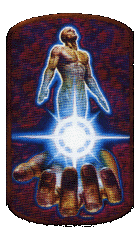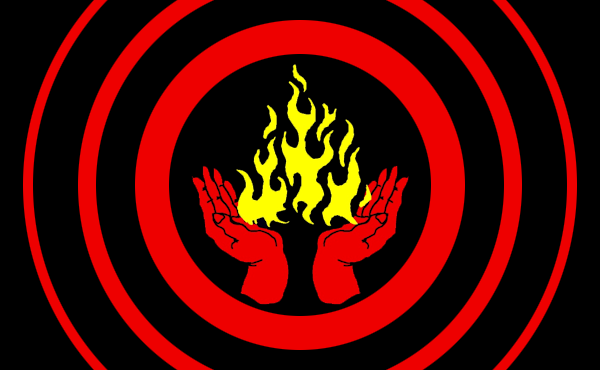Alex Linder Audio Books
Open Letters
Yggdrasil's Library
THE ORION PARTY
The Prometheus League
- Humanity Needs A World Government PDF
- Cosmos Theology Essay PDF
- Cosmos Theology Booklet PDF
- Europe Destiny Essays PDF
- Historical Parallels PDF
- Christianity Examined PDF
News Blogs
Euvolution
- Home Page
- Pierre Teilhard De Chardin
- Library of Eugenics
- Genetic Revolution News
- Science
- Philosophy
- Politics
- Nationalism
- Cosmic Heaven
- Eugenics
- Future Art Gallery
- NeoEugenics
- Contact Us
- About the Website
- Site Map
Transhumanism News
Partners




Review by RAYMOND E. FANCHER
Department of Psychology, York University, North York, Ontario, Canada M3J
1P3
Science, Sept 27, 1991 v253 n5027 p1565(2)
Sociologist Ronald Fletcher here makes the most outspoken attempt yet to
rehabilitate the reputation of Sir Cyril Burt (1883-1971), the British
psychologist widely accused of publishing a fraudulent series of
separated-twin studies, among other unethical practices. Following a detailed
critique of the accusations that will be fully intelligible only to readers
already familiar with the case, Fletcher concludes "that the 'scandal' in the
'Cyril Burt scandal' lies chiefly in the disgraceful nature of the testimony
of those who have raised and pursued it" (p. 342).
Fletcher effectively exposes some of the rhetorical excesses of Burt's
critics and the one-sided and sensationalistic reporting of the case by the
media. He reminds us that Burt, whatever his flaws, also made many positive
contributions to British psychology. But on the main substance of the charges
against Burt, informed readers will find Fletcher's arguments to be highly
questionable.
Some of the charges scrutinized by Fletcher involved unethical editorial
practices. For example, Alan and Ann Clarke claimed that Burt published, under
their names, summaries of their Ph.D. theses actually written by himself and
slanted in such a way as implicitly to discredit the theories of their mentor
Hans Eysenck. Fletcher reprints the two summaries in question, from the
British Journal of Educational Psychology, together with Alan Clarke's actual
abstract as included in his thesis (Ann Clarke's thesis apparently included no
abstract). Fletcher declares for Alan Clarke that the "substance and the
conclusion [of the two abstracts] are the same, but set out more precisely and
in more systematic form in [Burt's] version"; for Ann Clarke he asks the
reader to consider in what way Burt's abstract could be seen as "slanted
against Eysenck," with the obvious implication that it is not (pp. 120-125).
In fact, however, both Burt-authored abstracts explicitly mention Eysenck
as having suggested the specific tests used in the research, and both
explicitly minimize the value of those tests. One abstract concludes that
"none of the tests proposed has a sufficiently high validity coefficient to
claim any practical value," and the other describes the obtained correlations
as "far too low for the methods to be of any practical value." Alan Clarke's
own abstract asserted that his main investigation "yielded some most
suggestive findings," a statement nowhere echoed in Burt's summary. It is easy
to understand why the Clarkes might have felt misrepresented. And in any case,
Burt's practice of publishing manufactured thesis abstracts under students'
own names, without their knowledge or approval, was highhanded and
presumptuous at best.
Regarding more important editorial improprieties, Fletcher concedes that
Burt did write and publish some major papers under false names--a practice he
calls "unwise" and "certainly a deception (p. 319). Fletcher minimizes the
importance of this practice, however, and does not fully describe it. He does
not tell, for one example, how Burt as editor of the British Journal of
Statistical Psychology dealt with a paper by the sociologist A. H. Halsey
criticizing an earlier article written by Burt himself but published under the
name "J. Conway." Burt published Halsey's four-page critique under the title
"Class differences in intelligence I: a reply to Miss Conway"--immediately
followed by ten pages of "Class differences in intelligence II: a reply to Dr.
Halsey," by himself but under the name of Conway, and by "Class differences in
intelligence III," 19 more pages of rebuttal under Burt's own name. Elsewhere
in his book Fletcher castigates Halsey for making critical comments about
Burt's character, claiming that Burt "had always dealt honorably with [Halsey]
in exchanges of scholarly discourse" (p. 242). Halsey, outgunned 29 pages to 4
by a single opponent assuming two names, might understandably have felt
otherwise.
Fletcher claims that Burt's notorious twin studies were not only honest
but also deserve full scientific rehabilitation. Part of the case against
Burt's honesty was biographer Leslie Hearnshaw's revelation that Burt's
diaries for the final 18 years of his life, when his twin sample was
supposedly growing dramatically, made absolutely no mention of twins. Fletcher
cites a new analysis of the diaries by Brian Cox, suggesting that they were in
fact so sketchy as to make it unsurprising that no mention of twins should
occur, even if they existed. (Since the diaries themselves remain unpublished,
the reader cannot really judge between Hearnshaw's and Cox's interpretations.)
Fletcher goes on to cite Burt's repeated requests for information leading to
new twins in his articles and to accept at face value his statement that many
new cases "were discovered through personal contacts; . . . usually school
teachers on p. 280). But here a question arises: If Burt had truly studied new
twins throughout the 1950s, obtained through professional contracts, would not
some of those contacts or twins have been likely to identify themselves in the
course of the highly publicized "scandal" of the 1970s? Indeed, if Fletcher
could conclusively identify a single twin or twin contact from the later years
of Burt's life the charge of fraud would be severely challenged. But he does
not do so.
Fletcher argues that most of Burt's twin papers not only were honest but
"still rank as studies as accurately based and scientifically reputable as any
others being conducted in their own day" (p. 347). He excepts only Burt's
final, 1966 twin paper, which he admits was "so filled with unexplained
irregularities . . . as to be unusable as a basis of reference for testable
scientific work" (p. 320). But even Burt's early publications lacked the
detailed case descriptions found in other separated-twin studies, and for that
reason they were never taken very seriously even when their honesty was still
unquestioned. By contrast, Newman, Freeman, and Holzinger published a study in
1937--fully six years before Burt's first published mention of
twins--containing extended descriptions of the twins and their environments
that enabled readers to judge for themselves the extent to which they had been
truly "separated" and reared in randomly varying environments. (In fact, many
of the twins were reared in similar environments, often branches of the same
families, thus providing a probable environmental cause for at least part of
their similarity in IQ.) When James Shields published a second major study of
separated twins in 1962, he too presented detailed case studies--and in his
literature review he virtually ignored Burt's work because of its insufficient
detail.
Only in 1966 did Burt's twin study attract major notice, and then not
because he presented fuller case histories (for he did not) but because he
made a claim no other researcher has ever been able to make. He presented a
table purporting to show that his twins had been reared in totally
uncorrelated socioeconomic environments, thus suggesting that similarity of
environment played but a marginal role in producing their great similarity in
IQ. Now other scientists began to pay attention to Burt's study and to write
asking for further details. Burt never provided substantial detail, and the
train of events was shortly under way that resulted in his "exposure" as fraud
and unethical editor. Had he never made his surprising claim in 1966, Burt's
sketchily presented twin studies would have disappeared into scientific
oblivion, and his posthumous reputation would have rested primarily on his
legitimate contributions to psychology. But as things stand the darker side of
his character seems likely to predominate, despite rehabilitation efforts like
Fletcher's.
Transtopia
- Main
- Pierre Teilhard De Chardin
- Introduction
- Principles
- Symbolism
- FAQ
- Transhumanism
- Cryonics
- Island Project
- PC-Free Zone





Prometheism News



